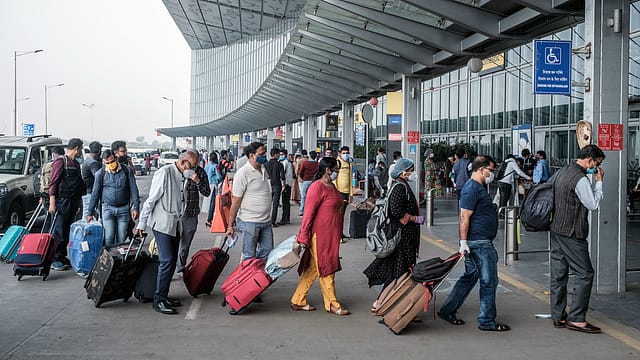Aviation gallops: Daily passengers up 3x since May
ADVERTISEMENT

After air travel demand hit rock bottom in May due to the deadly second wave of the Covid-19 pandemic, Indian aviation stakeholders are now confident of a “quick recovery” in passenger traffic. According to various data sources, air passenger traffic in July is growing in double-digits week-on-week. For instance, on July 11, over 185,000 domestic passengers took to the skies as compared to 140,000 a few weeks prior. In May, passenger traffic had dipped to almost 50,000 a day.
“After the first wave, the recovery in domestic traffic was very quick—in a few months it was back to 60% of pre-Covid-19 levels. Anecdotally, people still do want to travel and there is pent-up demand for business and leisure travel,” says Christoph Schnellmann, CEO, Yamuna International Airport Private Limited, which is building the Noida International Airport (NIA). “I expect the recovery after the second wave to be as quick as it was after the first wave,” adds Schnellmann, who was part of the senior management team of the Kempegowda International Airport, in Bengaluru, in 2007-08.
January 2026
Netflix, which has been in India for a decade, has successfully struck a balance between high-class premium content and pricing that attracts a range of customers. Find out how the U.S. streaming giant evolved in India, plus an exclusive interview with CEO Ted Sarandos. Also read about the Best Investments for 2026, and how rising growth and easing inflation will come in handy for finance minister Nirmala Sitharaman as she prepares Budget 2026.
Being built at a cost of over ₹5,000 crore, NIA is expected to become operational in 2024. The greenfield airport will open with a passenger terminal capacity of 12 million per annum, which will be served by a single runway. This despite the fact that Indian airports are staring at losses to the tune of $1 billion in fiscal 2022—as cash flows have reduced considerably because both aeronautical and non-aeronautical revenues have fallen—Schnellmann remains confident of the long-term India growth story.
Pre-pandemic, India’s metro airports were considerably constrained by airside capacity such as, runways, taxiways, and parking bays, which had become a deterrent to growth. In fact, the key airports in Delhi, Mumbai, Bengaluru, and Hyderabad, were on an aggregate operating at over 130% of their capacities, leading to severe congestion issues. Now with air travel having plummeted, these issues aren’t a cause of concern in the short term.
“The demand for domestic air travel is very strong and this is one of the strengths of the Indian [aviation] market,” says Schnellmann. “For the last 15 years or so passenger [traffic] volumes in India have grown at double-digit rates, and we are convinced that once we come out of this crisis growth will continue. And there will be a requirement for additional aviation infrastructure,” he adds.
There are also expectations that domestic travel could rebound to healthy volumes in the October to December period this year, according to Ronojoy Dutta, Wholetime Director and CEO, InterGlobe Aviation, which owns India’s largest airline IndiGo. “February 2021 was the best month we had post-Covid-19 and bookings on certain days in February peaked at approximately 80% of pre-Covid-19 levels. Our best guess scenario is that we will hit February ‘21 domestic travel levels again by the third quarter of FY22,” Dutta told analysts over a conference call last month.
Till the end of February, IndiGo saw a steady recovery in traffic, flying over 180,000 passengers daily and hitting peak load factors of 85% on certain days. The airline’s daily bookings were also strong with a peak of 231,000 per day. “Unfortunately, in March we saw a resurgence in the number of Covid-19 cases across the country and we saw a 10% reduction in passengers,” Dutta had said during the call. “While May started off with very weak traffic, we did see a modest turnaround beginning from the last week of May and this has continued into early June. This shows that passenger confidence returns swiftly with the decline in Covid-19 [cases].”
